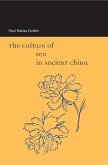Richly illustrated with photographs of historical heritage, this book chronicles " major" events which led to the rise and fall of dynasties. The focus is also on historical figures such as a petty bureaucrat in the Qin dynasty, a writer who loved travelling, or a scholar-official who devoted himself to calligraphy and painting. In this way, the authors, all young historians, narrate stories about the history of ancient China: from the era of the Warring States (475- 221 BC) when seven kingdoms wrestled with each other for supremacy to the unification of the country in the Qin dynasty (221- 207 BC), from the period of Three Kingdoms (220- 280) when it was divided again after the collapse of the Han dynasty (206 BC- AD 220) to the massive Rebellion of An Lushan (755- 763), which shook the Tang dynasty (618- 907), and from the everyday life in the Song dynasty (960- 1279) to the increased integration of ethnic groups to the transformation of the country in the Ming (1368- 1644) and Qing (1636- 1911) dynasties. Who were Chinese? How did they become what they are today? What does it mean to be Chinese in a long run? The book attempts to address such issues that have been widely discussed.
Hinweis: Dieser Artikel kann nur an eine deutsche Lieferadresse ausgeliefert werden.
Hinweis: Dieser Artikel kann nur an eine deutsche Lieferadresse ausgeliefert werden.








